This post may contain affiliate links. See my disclosure policy.
Roux is an essential thickening agent made from a simple mixture of flour and fat. With this easy roux recipe, learn how to make roux like a pro and use it to make soups, stews, sauces, and more!
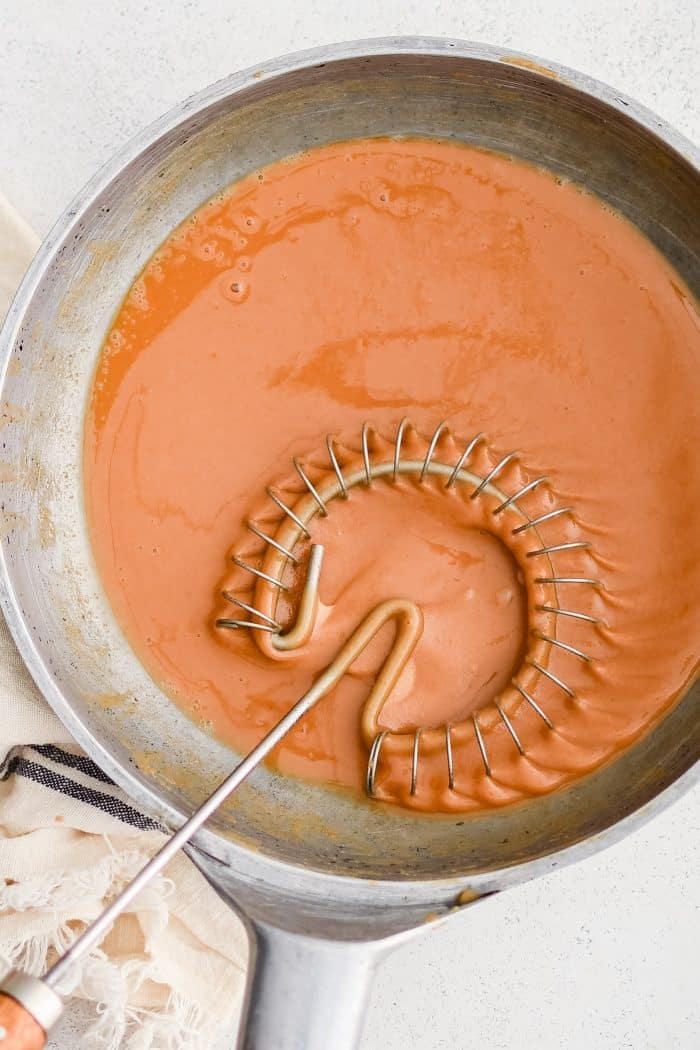
Easy Roux Recipe
Learning how to make a roux will free you to play and be creative in the kitchen. I know it sounds a little silly, but mastering the technique of making a roux is essential for making so many classic recipes—things like baked mac n cheese, gravy, gumbo, sauces, soups, and casseroles. And although it may sound fancy and complicated, making a roux is super easy. In this post, I’ll walk you through everything you need to know about roux, including how to make the perfect roux recipe.
Table of Contents
What is a Roux?
A roux, pronounced “roo,” is one of the essential building blocks of cooking. It is made from equal parts fat (oil, butter, or other fat) and flour by weight, not volume. The flour is added to a melted fat on the stovetop and then whisked continuously until it is smooth. It is then added to milk or broth to create thickened sauces, stews, and soups with a smooth consistency. Sometimes, however, the roux is cooked for extended periods, leading to different stages of roux (white to a very dark brown), each with unique flavor and thickening power.
A History
Roux is believed to have been developed in France in the 17th century. It was popular in French aristocratic cuisine as it allowed French chefs to produce silky, velvety sauces.
Chef Antonin Carême later solidified its value in the 19th century when he used roux in several complex sauces—the precursors to the “mother sauces” of French cooking. Later, chef Auguste Escoffier organized these “mother sauces” in his influential cookbook Le Guide Culinaire, which included béchamel and velouté sauces (both roux-based).
As French cuisine spread worldwide, roux found its way into diverse culinary traditions, notably in Cajun and Creole cuisine, when New Orleans was established as a French colony in 1718.

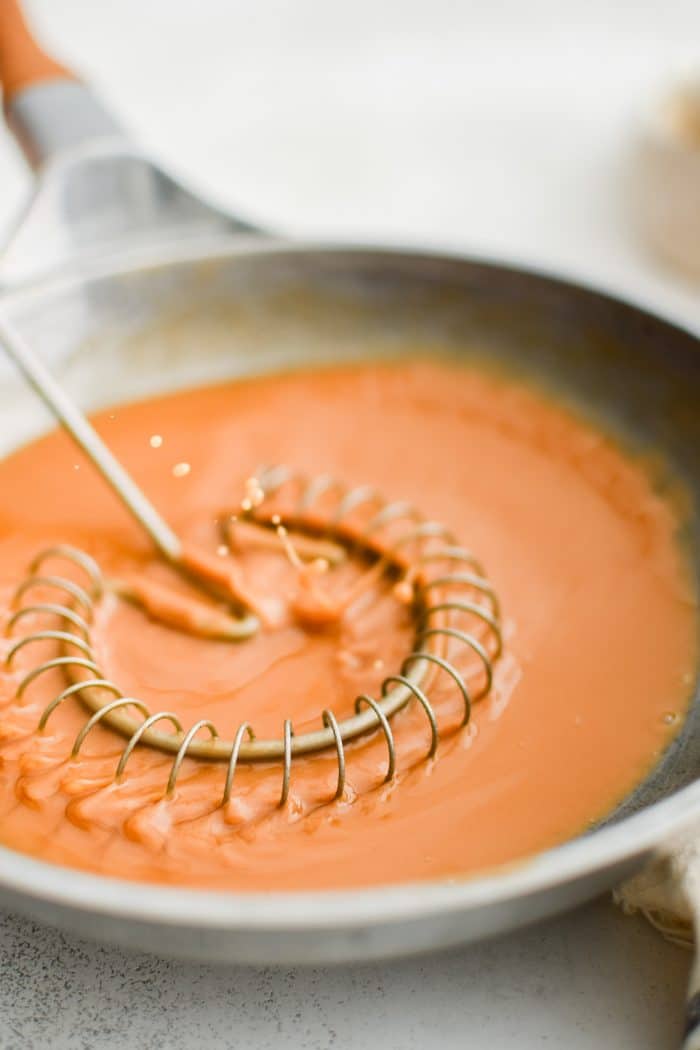
What is Roux Used For?
A roux is primarily used as a thickening agent for various dishes, such as cream-based sauces and gravies. Once the roux is cooked, it provides a smooth and silky consistency, eliminating the stress of the flour clumping together and ruining the sauce.
A roux may be used less often to add flavor to a dish. This is particularly popular in Cajun and Creole dishes like gumbo and étouffée. In this case, the roux is slowly cooked over a long period of time, transforming the original pale white color into a dark brown. In general, the darker the roux, the more flavorful it is, but the less thickening power it has.
Types of Roux
There are four main types of roux: white, blond, brown, and dark brown. Each type is distinguished by its cooking time and color, and each has its own flavor and thickening capability.
White Roux
White roux is light and pale in color and has a very neutral, mild flavor. It is used as a thickening agent, as it thickens without adding much flavor. It is used to make sauces like béchamel (roux mixed with milk) and is often used to thicken creamy pasta dishes, soups, chicken fried chicken white gravy, sauces, and even beer cheese.
Cooking Time: About 4-5 minutes, just until the flour has lost its raw smell.
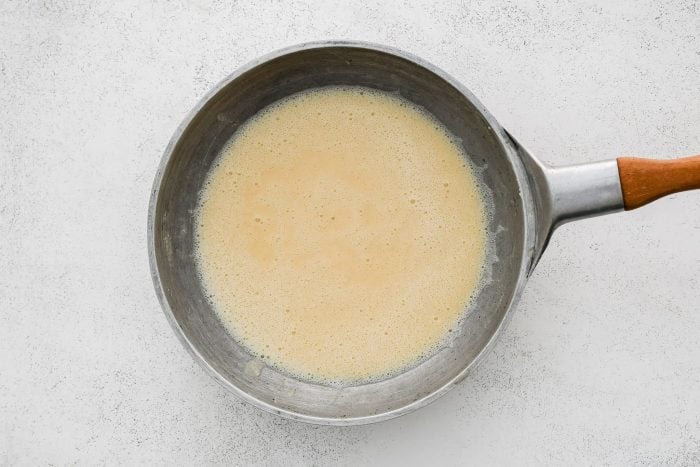
Blonde Roux
A blonde roux is very similar to a white roux. It is a very light golden brown color with a mild, nutty aroma resembling popcorn. It can be used to thicken any white sauce, although it has slightly less thickening power than a white roux. It is traditionally used to thicken velouté (stock thickened with roux), although it is a great multi-purpose roux for thickening gravy, sauces, and soups.
Cooking Time: Reached after approximately 15-20 minutes.
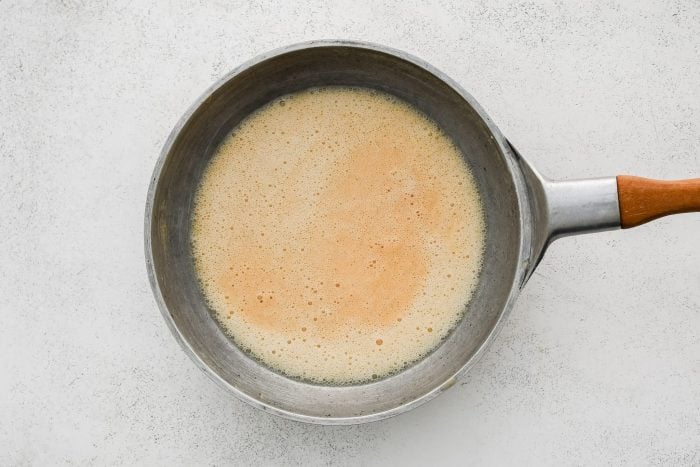
Brown Roux
Brown roux is cooked until it is a warm brown color, similar to peanut butter. It has a nutty and toasted taste with a robust depth of flavor. It is traditionally used for brown sauces, such as Espagnole (beef stock, tomato puree, and cooked mirepoix, all thickened with brown roux).
Cooking Time: About 30-35 minutes.

Dark Brown Roux (Best for Gumbo)
Dark brown roux is used almost exclusively for Cajun and Creole dishes like gumbo and étouffée. As the name implies, it is a deep, dark brown color with bold, toasted, and slightly bitter flavors if it is cooked long enough. It has the least thickening power due to the extended cooking time.
Cooking Time: Typically longer than 45 minutes.
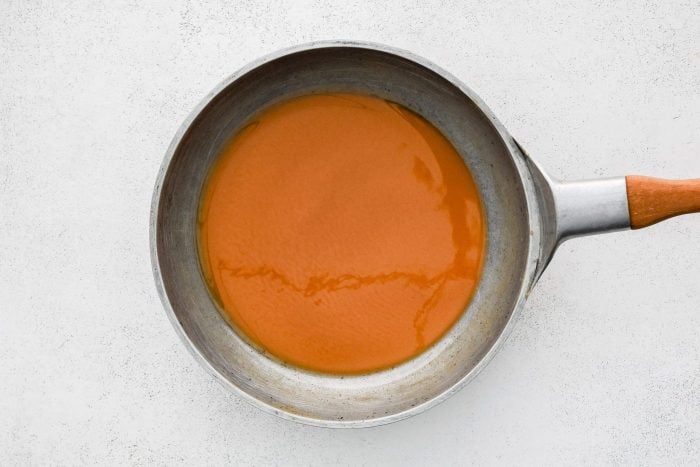
Roux Ingredients
A roux is made with just two simple ingredients: fat and flour.
Fat: The most common fat choices are butter, oil, and lard.
- Purpose: Fat coats the flour particles, preventing them from clumping together when liquid is added.
- In French cuisine, butter is most commonly used to make light roux, adding a rich, creamy flavor.
- In Cajun and Creole cooking, oil or lard is often used to make a dark roux. These fats can withstand longer cooking times without burning.
Flour: All-purpose flour is most frequently used for its balanced starch content, which creates a smooth texture and better thickening power.
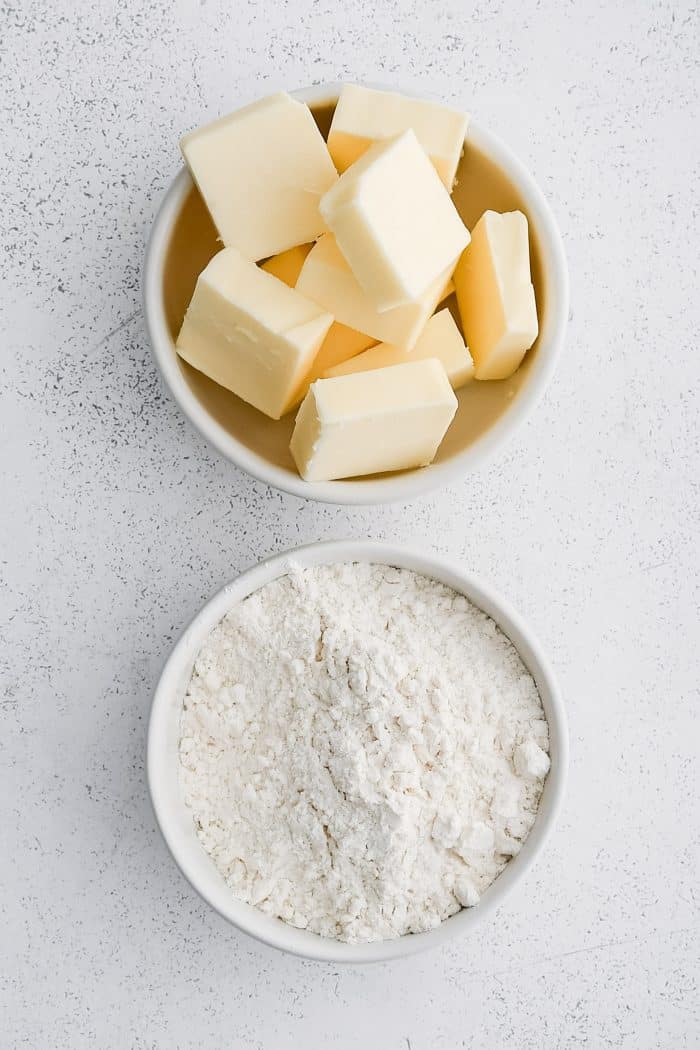
The Fat-to-Flour Ratio
The standard fat-to-flour ratio for a roux is 1:1 by weight (not volume). This means that for each ounce (or gram) of fat, you use an equal amount of flour. Using equal weights rather than volume measurements is often more accurate, especially when scaling up a recipe. So, if you have a kitchen scale, this is a great place to use it.
How to Make A Roux (Step-By-Step Recipe)
1. Melt the fat (in this case, butter). Melt 2 ounces of unsalted butter (4 tablespoons) in a heavy-bottomed pan or cast iron skillet set over medium to medium-low heat.
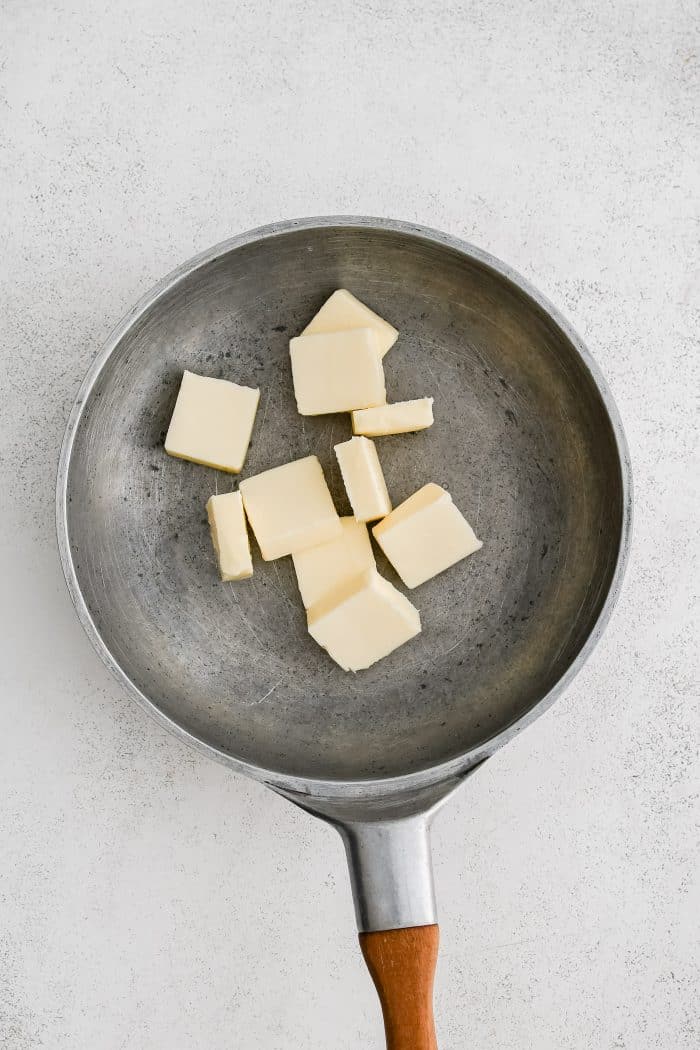
2. Add the flour. As soon as the butter melts, add 2 ounces of all-purpose flour (scant 1/2 cup) and immediately stir with a wooden spoon or metal spatula until the flour has fully absorbed the butter, creating a thick paste, approximately 30 seconds to 1 minute.

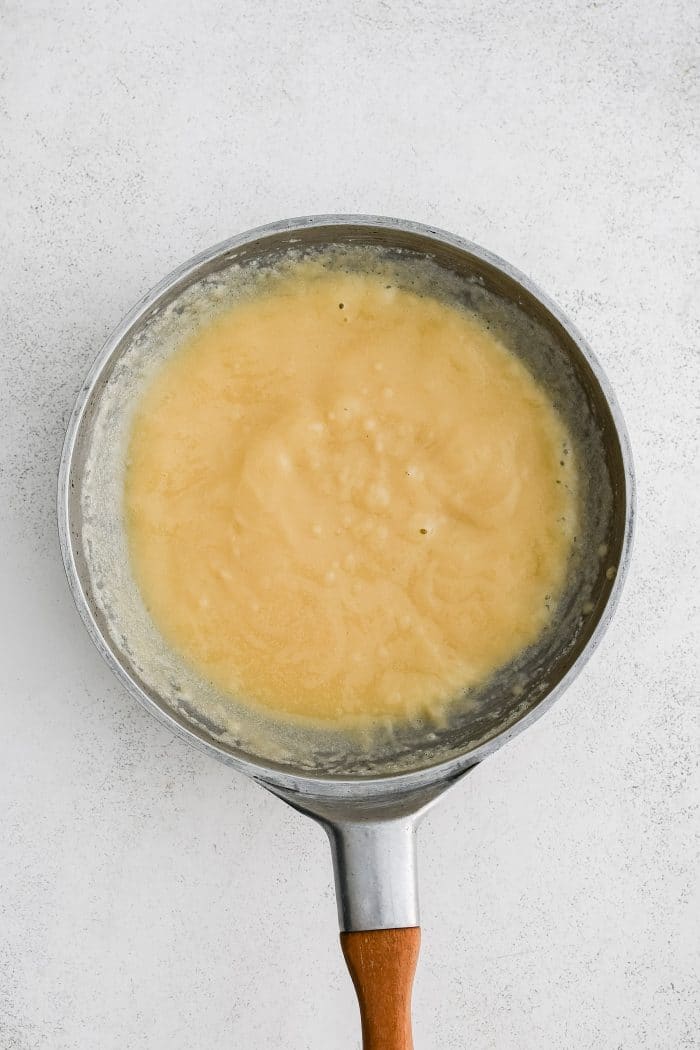
3. Cook the flour. Continue to cook, stirring continuously, until the mixture is smooth, slightly thickened, and tiny bubbles start to form, an additional 30 seconds to 1 minute. At this point, you have a white roux.

4. Continue cooking to the desired color. Continue whisking or stirring the roux as it cooks to prevent burning. Refer to the above section about the different types of roux, their uses, and their approximate cooking times.


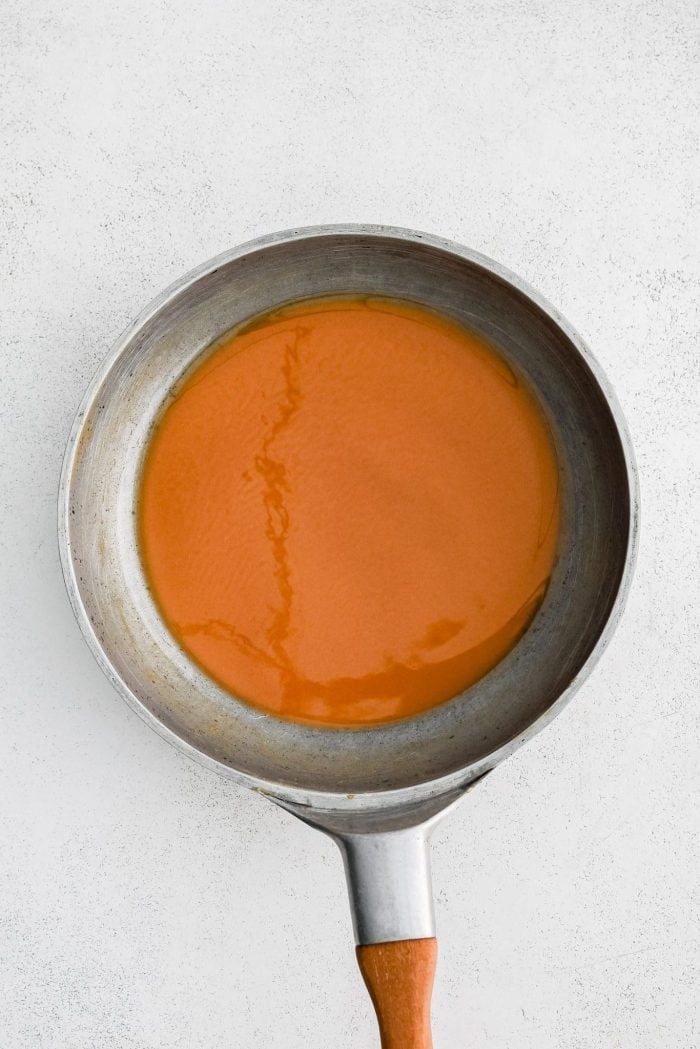
How and when to add liquid
Gradually add cold or room-temperature liquid (like milk, broth, or stock) to the hot roux as soon as the roux reaches your desired stage of doneness. Whisk continuously as you add the liquid to prevent lumps from forming. Allow the liquid and roux mixture to simmer while still stirring. Continue to heat until the desired thickness is reached, approximately 10-20 minutes.
Cooking Tips
- Cooking times will vary. If it seems like your roux is taking forever to progress, check your stovetop temperature. You may need to increase the temperature slightly. Just take care not to burn it.
- You will need to stir continuously. Constant stirring helps the roux cook evenly and prevents it from burning.
- Cook on medium to medium-low heat. Start on medium-low heat and increase to medium heat once you get the hang of things. Avoid cooking on high heat.
- Use the right fat. Butter is best for a white or blonde roux. Oil or lard works better for longer cooking and darker roux, as they have a higher smoke point and won’t burn as quickly.

Make-Ahead Tips
Roux can be refrigerated in an airtight container for up to 30 days or frozen for up to 6 months. Frozen roux should be thawed in the refrigerator overnight or gently reheated over low heat, stirring constantly.

How to Make A Roux (Easy Roux Recipe
Ingredients
- 2 ounces unsalted butter, 4 tablespoons
- 2 ounces all-purpose flour, scant 1/2 cup
Instructions
- Melt the fat (in this case, butter). Melt 2 ounces of unsalted butter (4 tablespoons) in a heavy-bottomed pan or cast iron skillet set over medium to medium-low heat.
- Add the flour. As soon as the butter melts, add 2 ounces of all-purpose flour (scant 1/2 cup) and immediately stir with a wooden spoon or metal spatula until the flour has fully absorbed the butter, creating a thick paste, approximately 30 seconds to 1 minute.
- Cook the flour. Continue to cook, stirring continuously, until smooth, slightly thickened, and tiny bubbles start to form, an additional 30 seconds to 1 minute. At this point, you have a white roux.
- Continue cooking to the desired color. Continue whisking and stirring the roux until the desired doneness (color) is reached. See note below.
Notes
- White: About 4-5 minutes
- Blonde: 15-20 minutes
- Brown: 30-35 minutes
- Dark Brown: 45+ minutes
Nutrition
Nutrition information is automatically calculated, so should only be used as an approximation.

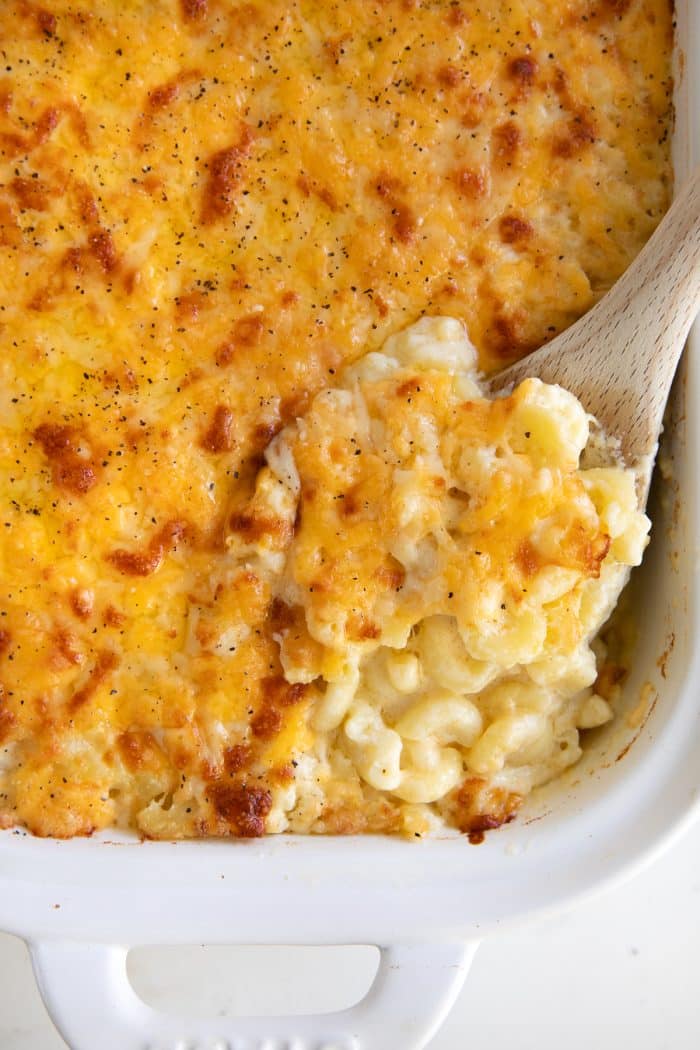

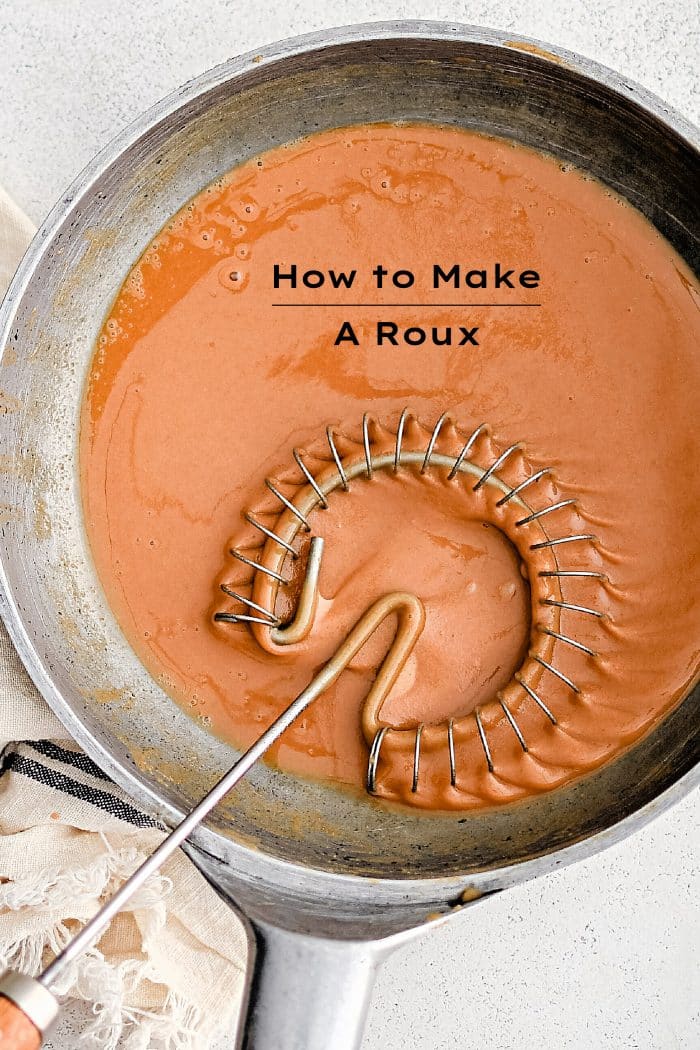













In the picture of the roux receipe, there is a kitchen tool used to stir the melted butter and flour. What is the kitchen tool called? Forked Spoon?
Just trying to find the tool on the internet.
Thanks and Happy New Year!
Pam Harriman.
Its a gravy whisk mixer, not a forked spoon lol 🙂